Feeling overwhelmed by clutter in your home? You’re not alone.
A disorganized space can lead to stress, making it harder to focus and enjoy your surroundings.
But with the right approach, decluttering doesn’t have to be daunting.
In this guide, we’ll walk you through practical decluttering techniques to help you create an organized, peaceful home.
Whether you’re dealing with overflowing closets or kitchen chaos, our room-by-room strategies will help you tackle clutter and stay organized long-term.
Ready to transform your space and declutter your life? Let’s get started!
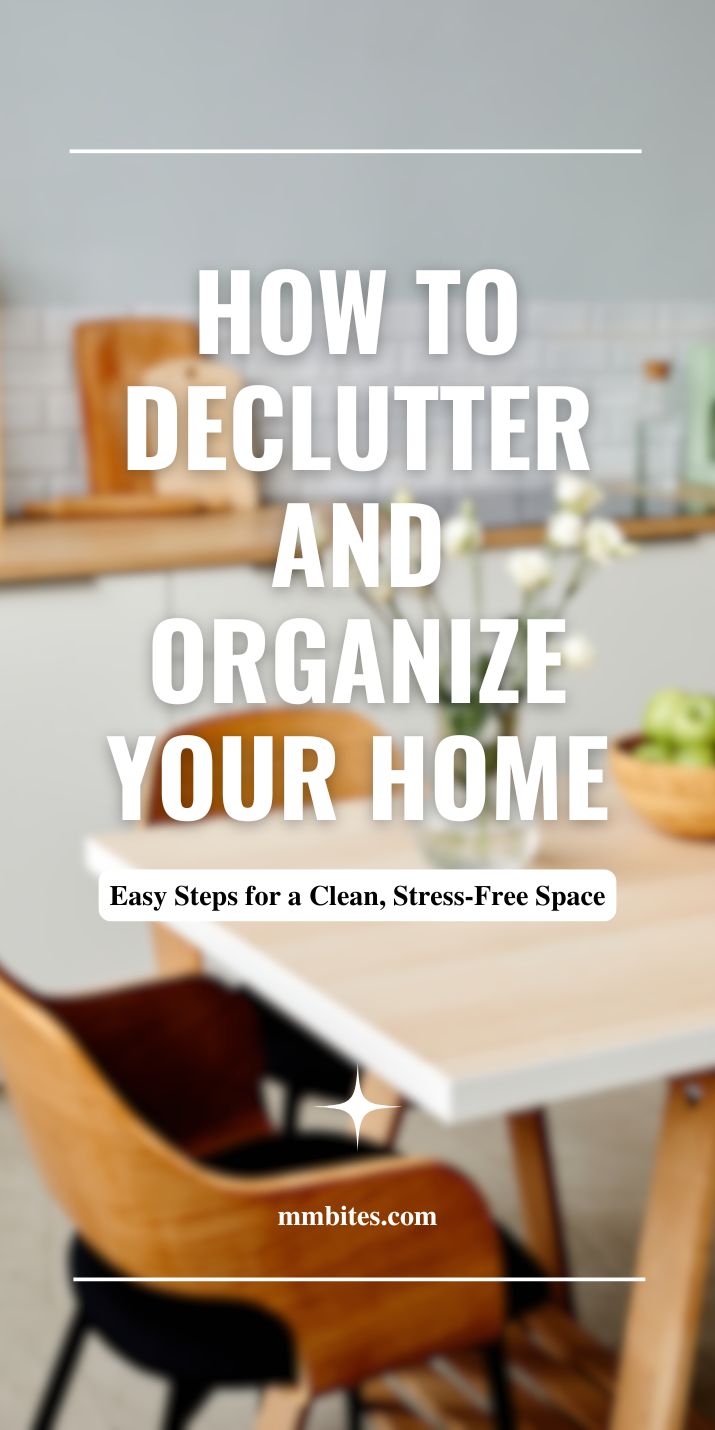
The Psychological Impact of Clutter
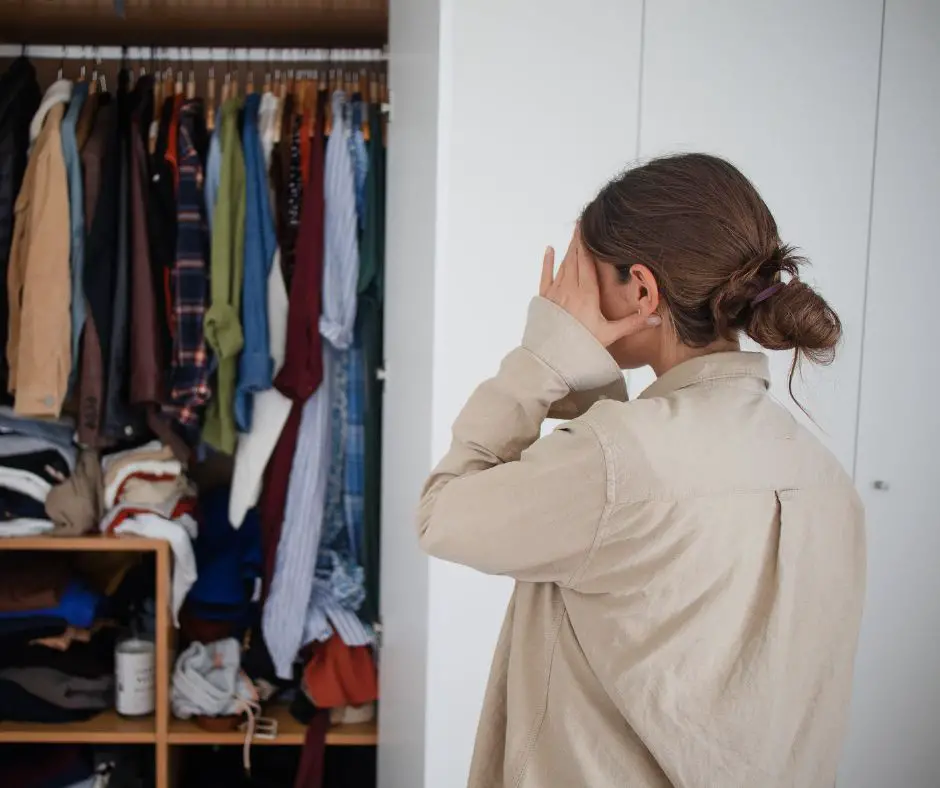
Clutter doesn’t just take up physical space—it affects your mental well-being too.
Research shows that a cluttered environment can increase stress levels and reduce productivity, especially for those working or living in chaotic surroundings.
Dr. Joseph Ferrari, a psychologist who studies clutter, found that people with cluttered homes are more likely to experience higher levels of stress, anxiety, and even depression.
Why is this? Clutter represents unfinished tasks.
Every time you see that pile of laundry or the stack of unread books, your brain registers them as incomplete, triggering stress.
This is particularly true for women, who often bear the burden of household organization.
A study from UCLA found that women in cluttered homes had higher levels of cortisol, the stress hormone.
One overlooked reason why clutter stresses us is decision fatigue. The more stuff you have, the more decisions you need to make—whether it’s choosing what to wear or where to store things.
By decluttering, you reduce the mental burden of constant decision-making.
Example: Sarah, a busy mom of two, noticed that her cluttered kitchen stressed her out every morning. By simply removing unnecessary gadgets and organizing her countertops, she found it easier to start her day with a calm mindset.
Essential Decluttering Methods

Decluttering might seem overwhelming, but breaking it down into simple, manageable methods makes it far more approachable.
Some of the most popular and effective strategies include the KonMari Method, the 12-12-12 Rule, and the One Bag a Day technique.
- KonMari Method: Popularized by Marie Kondo, this method focuses on keeping only items that “spark joy.”
- 12-12-12 Rule: This strategy encourages you to find 12 items to keep, 12 to donate, and 12 to throw away.
- One Bag a Day: Remove one bag of items daily to gradually declutter your space.
Decluttering can improve sleep quality. A study from the National Sleep Foundation found that people with cluttered bedrooms had more difficulty falling and staying asleep.
Decluttering your bedroom could be the key to a better night’s rest.
Example: Emily, a nurse, used the One Bag a Day method to transform her cluttered bedroom, which significantly improved her sleep quality.
How to Create a Decluttering Plan
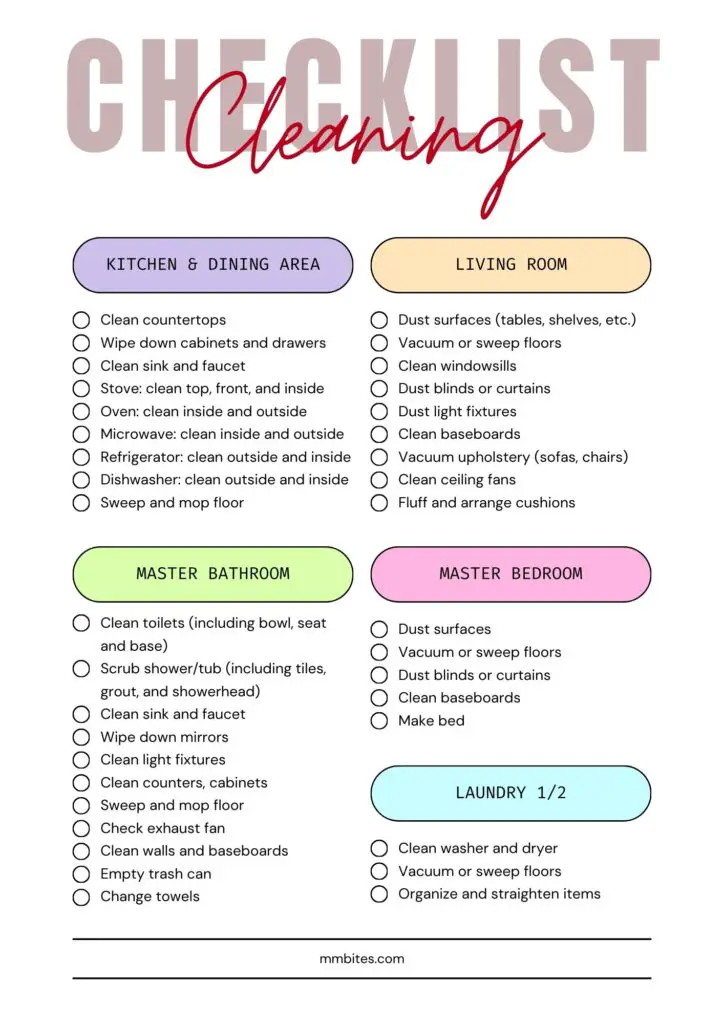
Creating a decluttering plan is key to staying organized.
Start by setting a decluttering goal—perhaps you want a more minimalist kitchen or an organized bedroom.
Then, break it down into manageable tasks. For example, decluttering the kitchen might take a weekend, while tackling your entire home could take a month.
Prioritizing High-Traffic Areas
Focus first on high-traffic areas like your living room or kitchen.
Starting with these areas provides immediate relief, making the process feel more rewarding.
Celebrate small wins. After organizing a drawer or shelf, take a moment to appreciate the space you’ve created.
This small act of acknowledgment helps build momentum.
Example: Jane, a working professional, set herself a 30-day plan where she would declutter one room each week. By starting with smaller, manageable areas like the bathroom, she found momentum and was able to tackle larger cluttered spaces with ease.
Decluttering Room-by-Room Strategies
Kitchen
The kitchen often becomes a clutter magnet with unused gadgets and expired pantry items.
Start by tackling small areas, like a drawer or shelf. Use the one-in, one-out rule: for every new item you bring into the kitchen, an old one has to go.
Decluttering small kitchen gadgets can free up counter space and make meal prep more efficient.
Example: Lisa, a foodie, noticed her kitchen gadgets were taking over her counter space. By decluttering unused gadgets and reorganizing them into designated drawers, she created a more functional cooking space.
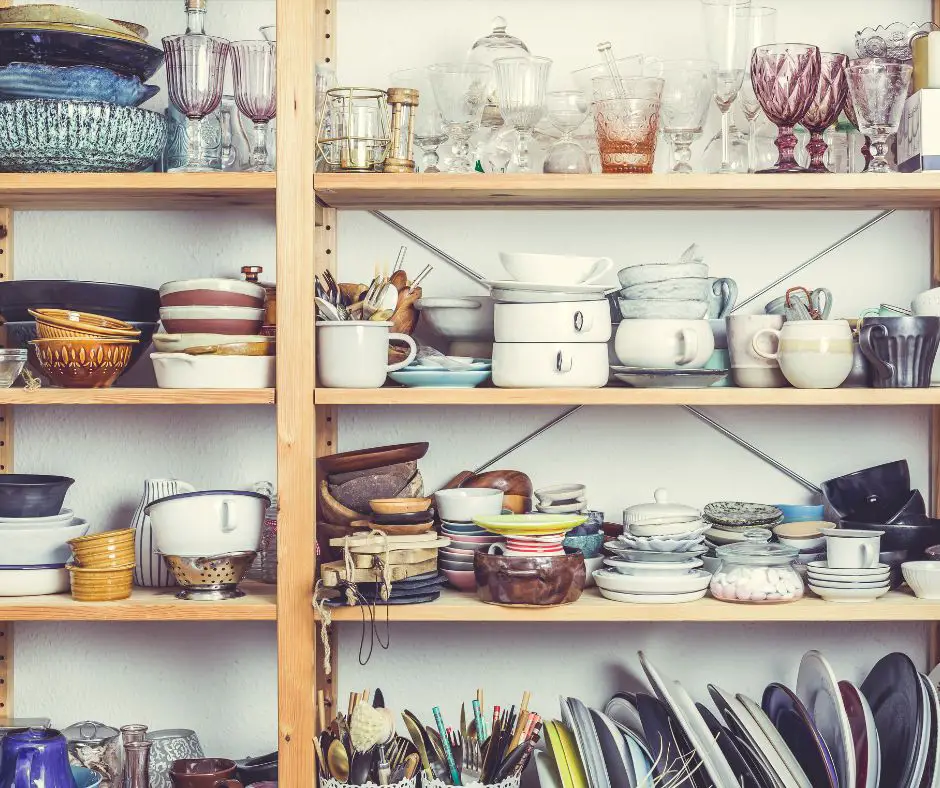
Closet
Closets often accumulate clothes we no longer wear.
A useful strategy is to declutter by clothing category (e.g., shoes, jackets, jeans), so you can clearly see what you own and make informed decisions about what to keep.
The KonMari Method is great for this, asking you to keep only the items that spark joy.

Bedroom
Decluttering nightstands and under-bed storage can transform your bedroom into a calming retreat.
Implementing small steps like daily tidying routines helps maintain a clutter-free bedroom.
Example: Tom and Mary, a couple who love to entertain, struggled to keep their living room tidy after hosting friends.
By creating small storage zones for books and remotes, they transformed their space into a clutter-free environment.
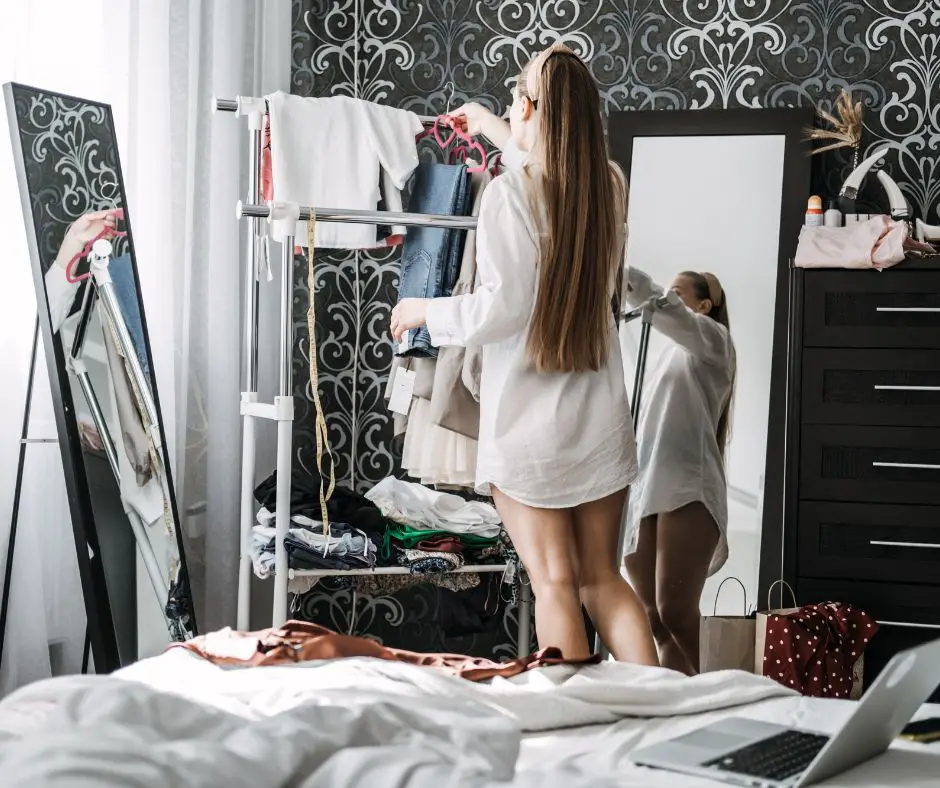
Staying Organized Long-Term

Once you’ve decluttered, the challenge is maintaining it. Establish daily habits, such as a 10-minute tidy-up routine, to keep clutter at bay.
Create Dedicated Zones
Assign specific areas for frequently used items, like keys or mail, to prevent clutter from returning.
People often focus on physical decluttering but neglect their digital space.
Regularly organizing your emails and files can help you feel more in control and reduce mental clutter.
Example: Kate, a busy marketer, made it a habit to spend 10 minutes each evening tidying up her workspace and checking her digital spaces. This simple routine helped her maintain an organized life both online and offline.
Overcoming Emotional Attachment to Clutter
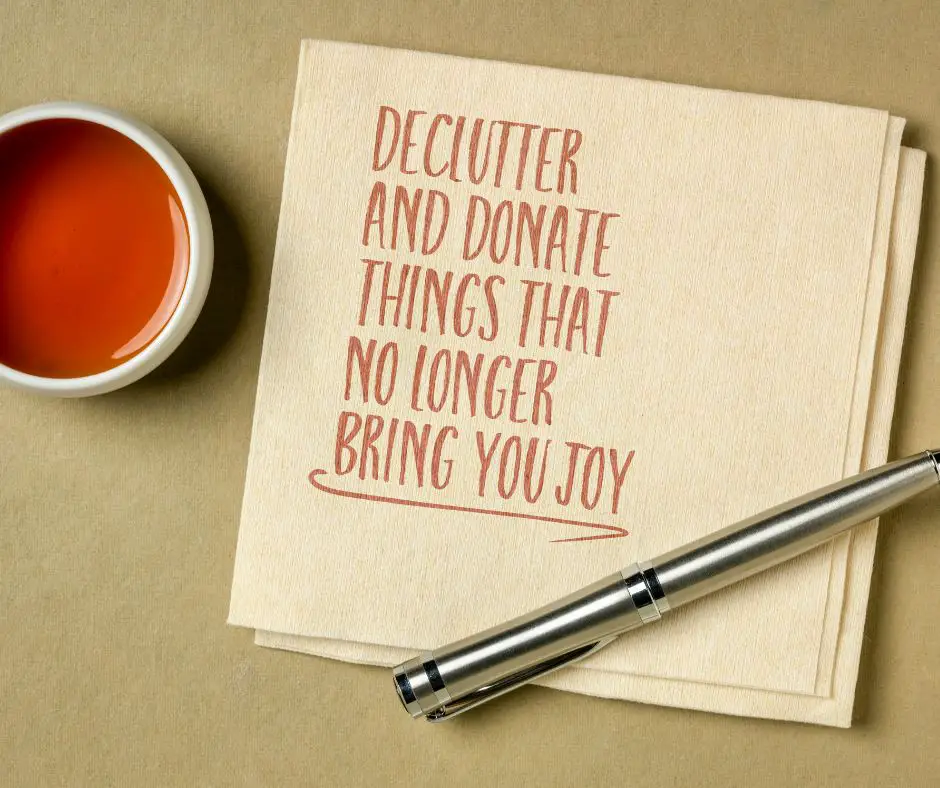
One of the biggest obstacles to decluttering is emotional attachment to items.
Whether it’s sentimental value, a fear of waste, or a “just in case” mentality, it can be difficult to let go of things.
However, recognizing why you’re holding onto certain objects can help you overcome this hurdle.
A common strategy is to ask yourself if the item truly adds value to your life.
For instance, if you’re holding onto old clothes because they remind you of a certain time in your life, consider keeping just one or two key pieces and donating the rest.
Another helpful method is the expiration date rule—place items you’re unsure about in a box, label it with a future date (e.g., 6 months from now), and if you haven’t used or thought about the items by that time, it’s time to let them go.
Focus on the positive emotions tied to decluttering rather than the loss of items.
Imagine the relief and satisfaction that comes from a cleaner, more organized space.
Example: Marissa, who was moving into a smaller apartment, struggled to part with her late grandmother’s belongings.
She kept a few special items—like her grandmother’s favorite scarf and a teacup set—while donating the rest to a charity her grandmother supported.
Avoiding Common Decluttering Pitfalls
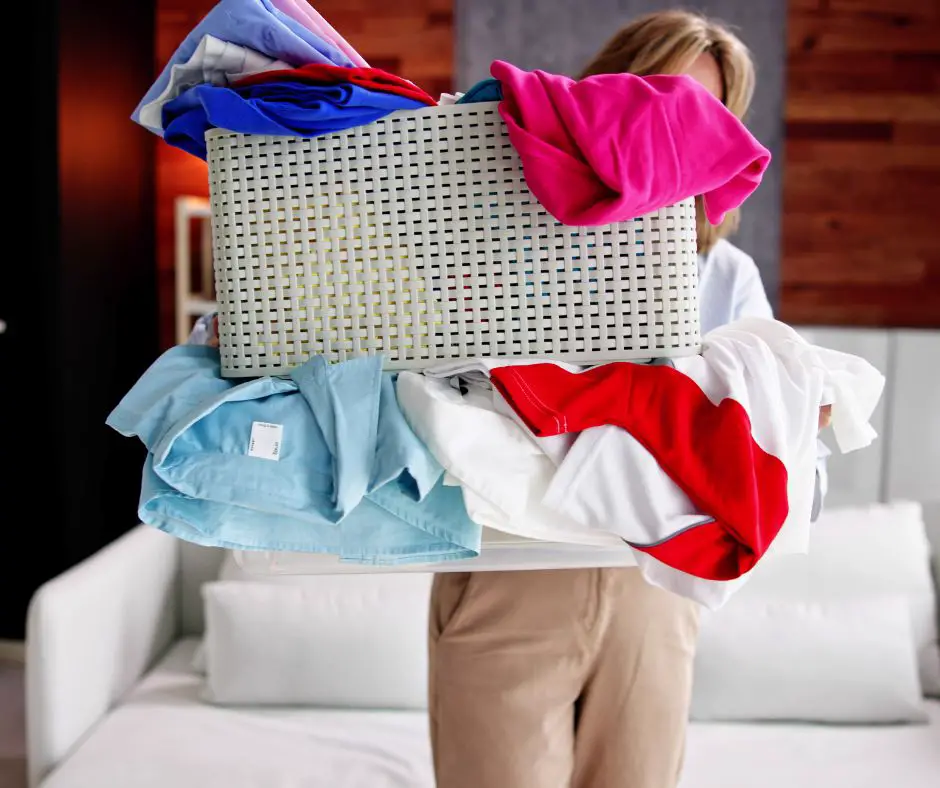
Many people start their decluttering journey with the best intentions, only to encounter roadblocks along the way.
Common pitfalls can derail your progress, so being aware of them is key to staying on track.
Pitfall #1: Organizing Before Decluttering
It’s tempting to buy bins and organizers before you even start decluttering, but this often leads to simply rearranging clutter rather than reducing it.
Always declutter first—get rid of things you don’t need—then decide how to organize what’s left.
This will prevent you from filling up storage bins with unnecessary items.
Pitfall #2: Tackling Too Much at Once
One of the biggest mistakes people make is trying to declutter an entire room or even the whole house in one go.
This can be overwhelming and lead to burnout. Instead, break it down into smaller, more manageable tasks.
Start with one drawer, one closet, or one section of a room.
You’ll gain momentum as you complete each smaller task, making it easier to tackle larger projects later.
Maintaining a flexible mindset is essential. Life happens, and your decluttering schedule may need to adapt. Persistence, not perfection, is the key.
Pitfall #3: Failing to Create a Maintenance Plan
Decluttering is only half the battle—staying organized is the other half.
Without a maintenance plan, clutter will inevitably creep back in. Establish daily habits, like a 10-minute clean-up before bed, to keep your space tidy.
Example: Mark and Sophie tried to declutter their entire garage in one weekend, which left them exhausted and with little progress.
The following weekend, they focused just on tools and sporting equipment, using the 12-12-12 Rule.
By breaking it down, they finished the task with more energy and satisfaction.
Practical Storage and Organizational Hacks
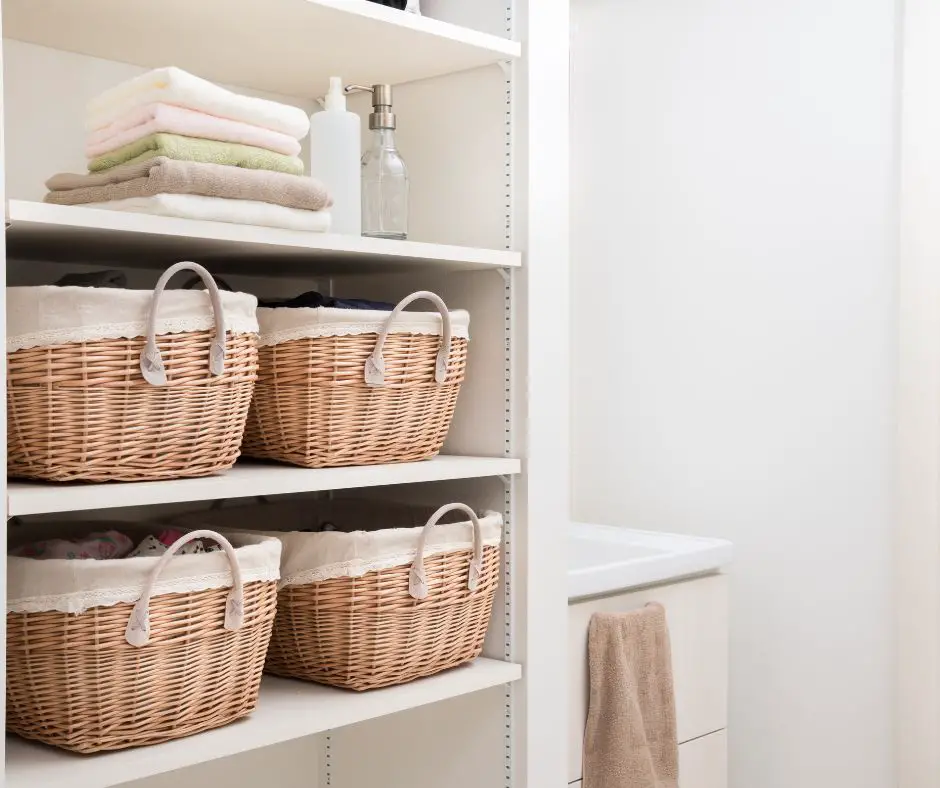
Storage solutions are essential to maintaining an organized home.
However, the key is to implement storage options that actually work for your lifestyle.
Repurposing items you were already available.
For example, mason jars, baskets, and shoe organizers can be used for different purposes.
Think creatively to maximize what you already have, avoiding unnecessary purchases and keeping your space neat.
Maximizing Vertical Space
One of the best ways to increase storage without cluttering floors or countertops is to go vertical.
Shelves, hooks, and pegboards are great for small spaces.
For instance, in the kitchen, you can hang pots and pans on a pegboard to free up cabinet space.
Multi-Use Storage Solutions
Consider using items that serve multiple purposes, such as ottomans with hidden storage or foldable furniture.
This allows you to store items out of sight while keeping the space functional.
Using clear containers for storage lets you easily see what’s inside without digging through boxes or bins.
You don’t always need to buy expensive storage systems to stay organized.
In fact, most people already own items that can be repurposed creatively for storage.
By using what you have, you can reduce waste and avoid adding clutter to your home.
Example: Susan, a college student in a small apartment, used vertical shelving and under-bed storage to maximize her limited space.
She repurposed mason jars for pantry essentials and used a shoe organizer to keep toiletries and small accessories in order, saving both money and space.
Motivational Tips for Staying on Track

Decluttering can feel overwhelming, but maintaining motivation is key to long-term success.
One of the best ways to stay motivated is to start small and celebrate progress along the way.
Tackle manageable areas first, like a drawer or shelf, to create a sense of accomplishment that builds momentum.
Set a Timer
Allocate 15 minutes to declutter one area, like a closet or countertop.
This short burst of effort prevents burnout and shows immediate results, making it easier to stay on track.
Many decluttering articles focus on physical tidying, but it’s equally important to reward yourself for the work you put in.
For example, after each decluttering session, take time to enjoy a relaxing activity—a warm bath, a walk, or a cup of tea.
This positive reinforcement makes decluttering feel less like a chore.
Example: Jenny, a working mom, set a goal to declutter her kitchen in 15-minute increments.
After each session, she rewarded herself with a chapter from her favorite book.
This simple reward system turned decluttering into an enjoyable break.
Track Your Progress
Take before-and-after photos of your decluttering efforts.
Seeing the transformation visually is incredibly rewarding and can help you stay focused on your goals.
Pro Tip: Turn decluttering into a family game by making it a scavenger hunt.
Set a timer and see who can find and declutter the most items in a specific area, turning the process into a fun activity for everyone.
Free Printable Declutter Checklist
Ready to get going with your decluttering? Snag the printables by clicking on the button below.
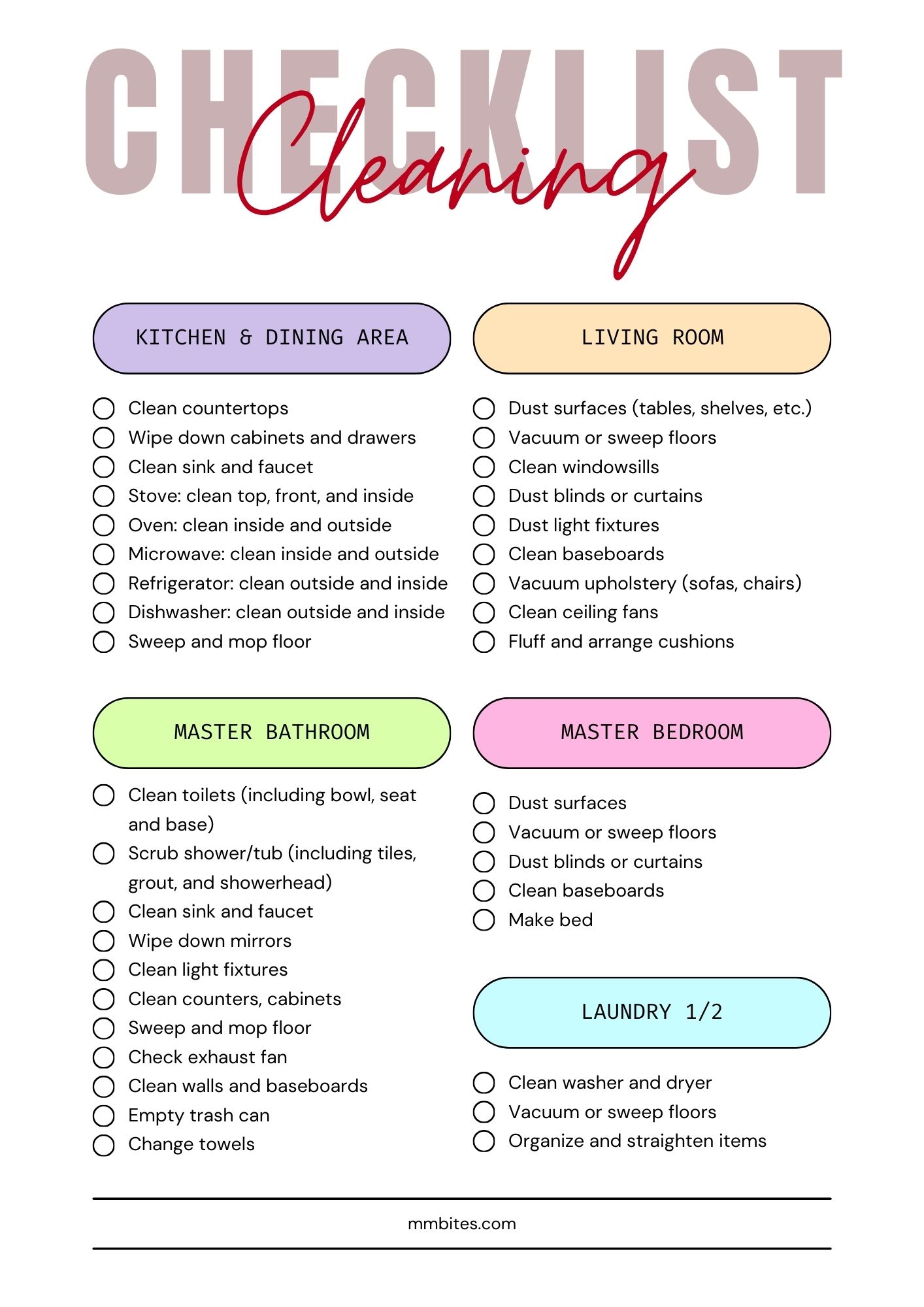
Conclusion
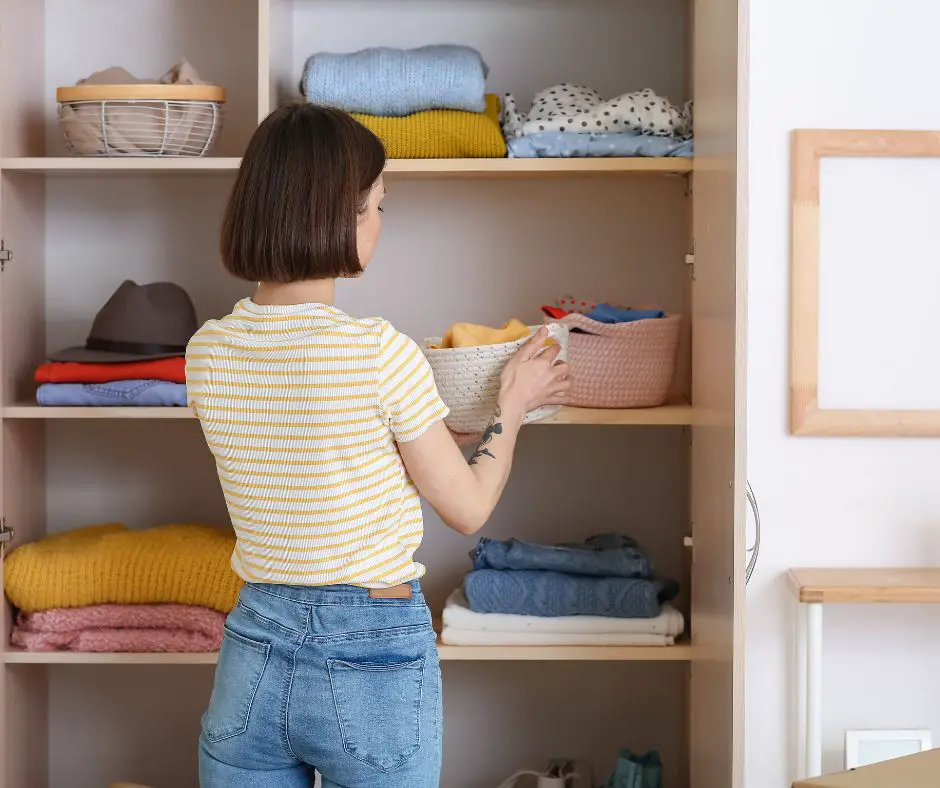
Decluttering your home is about more than just clearing physical space—it’s about creating mental clarity and reducing stress.
By using room-by-room strategies, effective decluttering methods, and motivational tips, you can transform your living space into an organized, calming environment.
Remember, the key is to start small, stay consistent, and celebrate your progress along the way.
We’d love to hear from you! How has decluttering made a difference in your life?
Share your favorite tips or let us know which part of your home you plan to tackle next.
Your feedback helps us create more valuable content for our readers.
Leave a comment, follow us on Pinterest, and explore more tips on MMBites!
Key Points:
- Clutter causes stress: Studies show that a cluttered environment can lead to mental overwhelm.
- Start small: Focus on one room or drawer at a time to avoid feeling overwhelmed.
- Use effective methods: Techniques like the KonMari Method and One Bag a Day can simplify the process.
- Emotional attachment: Overcome emotional attachment by focusing on the benefits of a clutter-free space.
- Daily maintenance: Develop habits like a 10-minute tidy-up to stay organized.
FAQs
1. What’s the best way to start decluttering my home?
Start with a small area, like a drawer, and gradually build momentum. The 12-12-12 Rule is a quick way to declutter without feeling overwhelmed.
2. How do I declutter if I feel emotionally attached to my things?
Focus on items that serve a purpose or bring joy. Consider keeping just a few sentimental items and donating the rest.
3. How can I maintain an organized home after decluttering?
Create daily habits, such as a 10-minute tidy-up routine, and assign dedicated zones for commonly used items.
4. What are some effective decluttering methods for busy people?
The One Bag a Day method is great for people with busy schedules. It allows you to declutter gradually without dedicating large chunks of time.
5. How can I declutter small spaces like apartments?
Use vertical storage and multi-use furniture to maximize space in small apartments.
References:
- Beckwith, A. & Parkhurst, E. (2022). The Mental Health Benefits of Decluttering. Utah State University. Retrieved from https://extension.usu.edu.
- Verywell Mind. (2023). Clutter and Mental Health: What’s the Connection? Retrieved from https://www.verywellmind.com.
- Psychology Today. (2022). The Many Mental Benefits of Decluttering. Retrieved from https://www.psychologytoday.com.

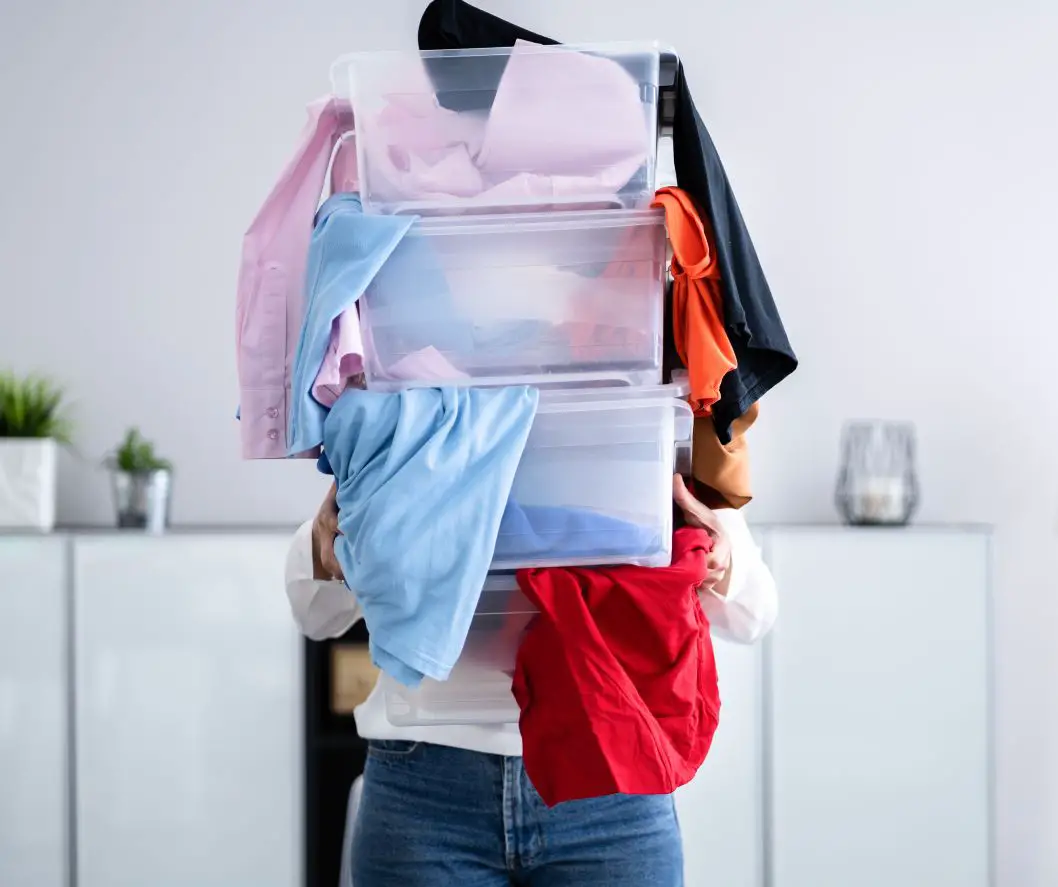
 Save To Pinterest
Save To Pinterest
Leave a Reply